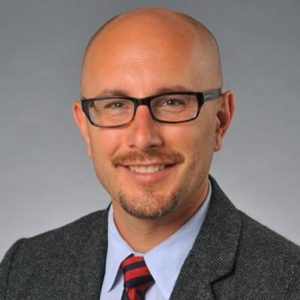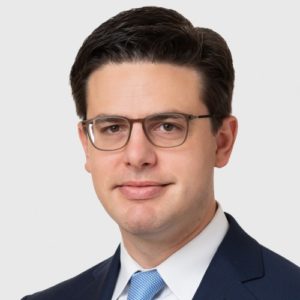The Federalist & Contemporary Debates
Consider The Federalist Papers anew through the lens of current events.
Tuesdays | June 15, 22, 29, July 6, & 13
Online Seminar Series
How do ideas shape public policy? How do they interact with interests and institutions to produce policy change? How much can – and should – theoretical abstractions guide the practical and concrete work of politics?
In this online course, led by political scientist Daniel DiSalvo, fellows will examine the influence of ideas in some of our key policy debates – from social class and race to welfare, education, crime and policing, and immigration. Reading will include seminal texts in political science as well as contemporary accounts. In studying major domestic policy issues, fellows will gain insight into our expectations of and dissatisfactions with American government. They will learn how ideas can transform politics, while also appreciating the limits and pitfalls of policy reform.
Image: Patrick Moynihan and Richard Nixon Touring the Redevelopment Area of Pennsylvania Avenue, 1970
Dan DiSalvo on Government Against Itself: Public Union Power and its Consequences
This online seminar will meet weekly over five weeks, on Tuesdays from 10 AM to 12 PM ET via Zoom. A $500 stipend and all course materials will be provided.

Daniel DiSalvo is a Senior Fellow at the Manhattan Institute’s Center for State and Local Leadership and an Assistant Professor of Political Science at The City College of New York-CUNY. His scholarship focuses on American political parties, elections, labor unions, state government, and public policy.

Daniel DiSalvo is a Senior Fellow at the Manhattan Institute’s Center for State and Local Leadership and an Assistant Professor of Political Science at The City College of New York-CUNY.
His scholarship focuses on American political parties, elections, labor unions, state government, and public policy. He is the author of Government Against Itself: Public Union Power and Its Consequences (Oxford University Press, 2015) and Engines of Change: Party Factions in American Politics, 1868-2010 (Oxford University Press, 2012).
DiSalvo writes frequently for scholarly and popular publications, including National Affairs, City Journal, American Interest, Commentary, The Weekly Standard, Los Angeles Times, New York Daily News, and New York Post. He is coeditor of The Forum: A Journal of Applied Research in Contemporary Politics.
DiSalvo holds a Ph.D. in politics from the University of Virginia.
Session I Readings:
Optional Viewing:
Discussion Questions:
Session II Readings:
Discussion Questions:
Readings:
Discussion Questions:
Readings:
Optional Viewing:
Discussion Questions:
Readings:
Discussion Questions:
Readings:
Discussion Questions:

Greg Weiner
Greg Weiner is associate professor of Political Science, founding director of the Daniel Patrick Moynihan Center for Scholarship and Statesmanship, and provost at Assumption College. He is the author of American Burke: The Uncommon Liberalism of Daniel Patrick Moynihan.

Martha Bayles
Martha Bayles is an Associate Professor of Humanities at Boston College, where she teaches a year-long course titled, “From Homer to Dante” and various senior seminars. Her research centers around popular culture and cultural history. She has previously served as a lecturer at Harvard University and Claremont McKenna College.

Matthew Continetti
Matthew Continetti is resident fellow at the American Enterprise Institute, Prior to joining AEI, he was Editor in Chief of the Washington Free Beacon. His articles and reviews have appeared in The New York Times, The Wall Street Journal, and The Washington Post.

Adam J. White
Adam J. White is a Resident Scholar at the American Enterprise Institute, and an Assistant Professor at George Mason University’s Antonin Scalia Law School, where he also directs the Gray Center for the Study of the Administrative State at George Mason University’s Antonin Scalia Law School.

Daniel DiSalvo
Daniel DiSalvo is a Senior Fellow at the Manhattan Institute’s Center for State and Local Leadership and an Assistant Professor of Political Science at The City College of New York-CUNY. His scholarship focuses on American political parties, elections, labor unions, state government, and public policy.